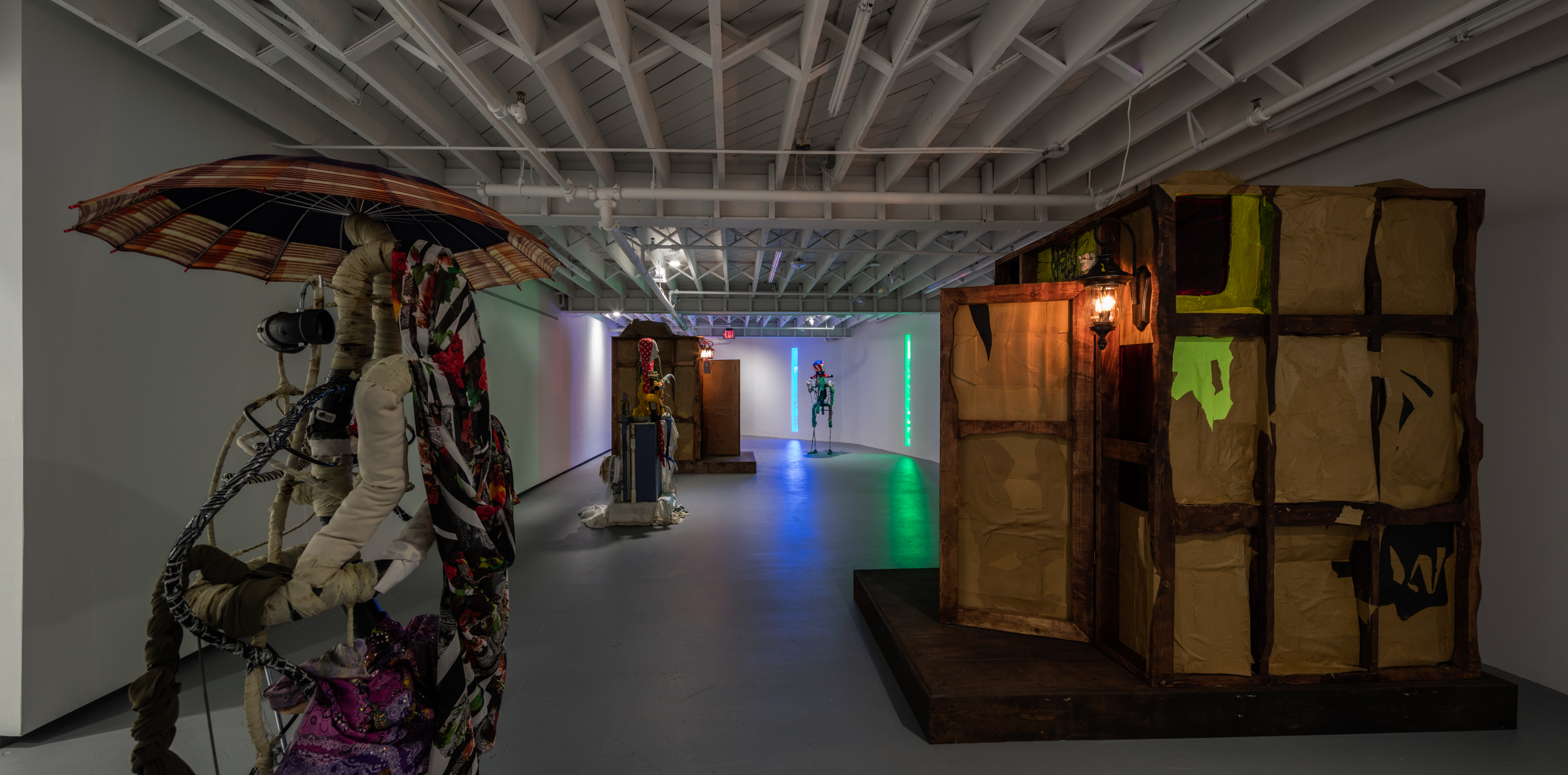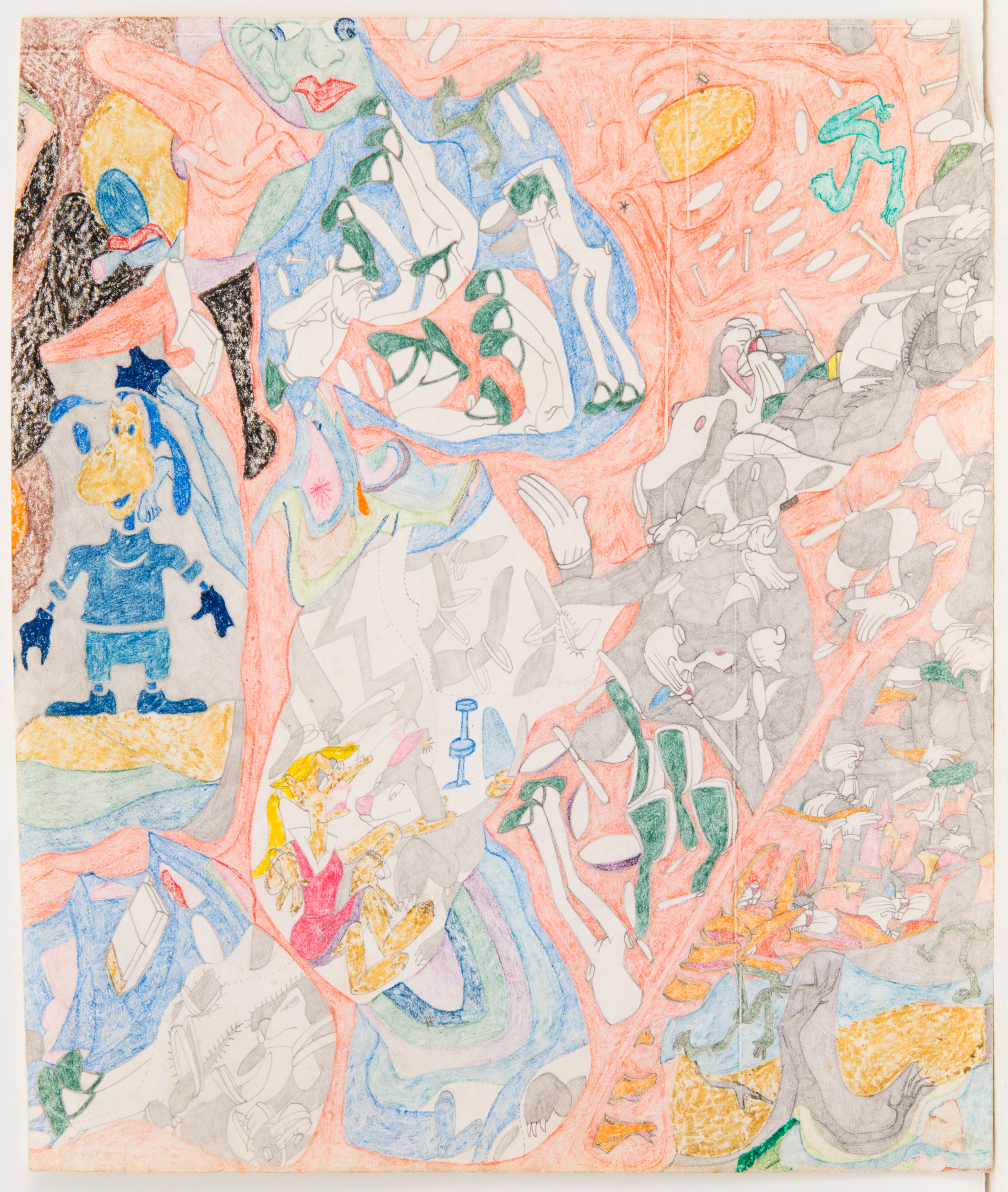
With four exhibits, ICA, Miami refuses to sleep this summer
Above: “The Inverse” by Laura Lima. Photo by Fredrik Nilsen Studio.
For the latest entry into the pantheon of arts institutions in South Florida, the Institute of Contemporary Art, Miami has made quite a splash in its short, almost two-year existence. In its temporary home in the Design District–the permanent museum is scheduled to open in 2017–the ICA has delivered some firsts that have enhanced the art scene here.
For instance, earlier in 2016 ICA presented the first solo survey in the United States of the influential conceptual artist John Miller. From the site-specific labyrinth Miller created in the atrium, to sculptures, photography and video with implicit social commentary from the 1980s onward, “I Stand, I Fall” was one of the most interesting exhibits of the year.
Now, several more firsts are on display, all with funding from Knight Foundation. In June, Laura Lima entangled the ground-floor atrium, along with the support beams rising across three floors of the Moore Building, with black-and-blue nylon rope. The braided rope starts out thick, draped across the room, and becomes increasingly thinner as it snakes its way down the beams and onto the floor, eventually shrinking to a small string that ends up between the legs of a live performance artist who is positioned inside the wall, with only her legs revealed.
This performance aspect of “The Inverse” is somewhat controversial, nothing new for the experimental Brazilian who works in interactive art, often using bodies–nude and otherwise–and animals to explore human relations and social norms. She follows in a vein of groundbreaking performative conceptual Brazilian art from the 1960s and ’70s that garnered worldwide attention. Lima is a also a co-founder, along with her more famous countryman, the sculptor Ernesto Neto, of a pioneering art and cultural space in Rio de Janeiro, A Gentil Carioca.
While Lima has shown extensively internationally, this is the debut North American solo museum outing for her. Both Miller and Lima were long overdue to be introduced to Miami; kudos to chief curator Alex Gartenfeld for bringing them.

Site-specific installation by Renaud Jerez. Photo by Fredrik Nilsen Studio.
Upstairs, three other exhibits fill the galleries–making the ICA’s temporary home feel much bigger than it actually is.
A sculptural installation makes up one of the shows, from the relatively young Berlin-based artist Renaud Jerez, who is also making his solo U.S. debut. His works, however, invoke a very different ambience than that of Lima. Bathed in glowing green, red and blue lighting, Jerez’s strange, anthropomorphic creatures, life-size or taller and made from all sorts of materials, inhabit this bizarre world, which mixes futuristic oddity with some comic relief. There are a couple of little huts that the visitor can walk into, maybe the houses of these weird figures? These intimate huts in fact give some humanity to this otherwise cold universe.
The two drawing and painting exhibits that complete the summertime offerings at ICA could not be more different. These are series of works from two female artists who have been working for over four decades, and their presence feels like a refreshing break from the very contemporary art that Miami has become known for.
But don’t think that the works of Ida Applebroog or Susan Te Kahurangi King seem dated or stale. For anyone interested in art, these are a must see.

Susan Te Kahurangi King, “Untitled,” circa 1970-1979; graphite colored pencil and crayon on paper. Collection of KAWS.
King is the least well-known. She is a self-taught artist from New Zealand, born in 1951, who started drawing her own, truly trippy versions of Looney Tunes cartoons when she was a tween. Many examples of these early drawings are hung on the walls here, and it’s worth looking at them closely: some stunning imagery emerges, a combination of tribal iconography and pop art, before the term “pop art” was even coined. This too is the first full-fledged museum exhibit of King’s prolific and eccentric output.
Applebroog is the most famous artist of the four at ICA. Born in 1929, her sympathetic but disturbing drawings and paintings can be found in MOMA, the Met, Guggenheim and the Whitney among other museums. Here, there are groupings of small-format books from the 1970s, with simple drawing and examples of her concrete poetry; and some spectacular large-scale paintings from 2012, the “Catastrophe” works.
But likely the most compelling are the drawings made after Applebroog checked herself into a mental institution in 1969, which were hidden away for decades. The “Mercy Hospital” series consists of 104 pieces, darkly humorous little sketches that combine text, India ink and watercolor to reveal her very personal “diary.” One abstract work reads: “I am somebody.”
The solo exhibits of Laura Lima, Renaud Jerez, Susan Te Kahurangi and Ida Applebroog run though Oct. 30 at the Institute of Contemporary Art, Miami (4040 N.E. Second Ave.). Admission is free.
Recent Content
-
Artsarticle ·
-
Artsarticle ·
-
Artsarticle ·

